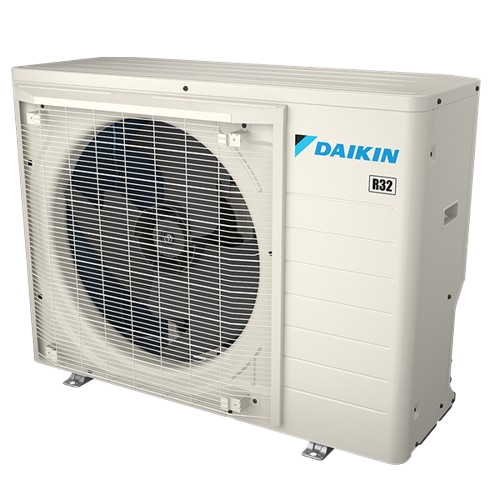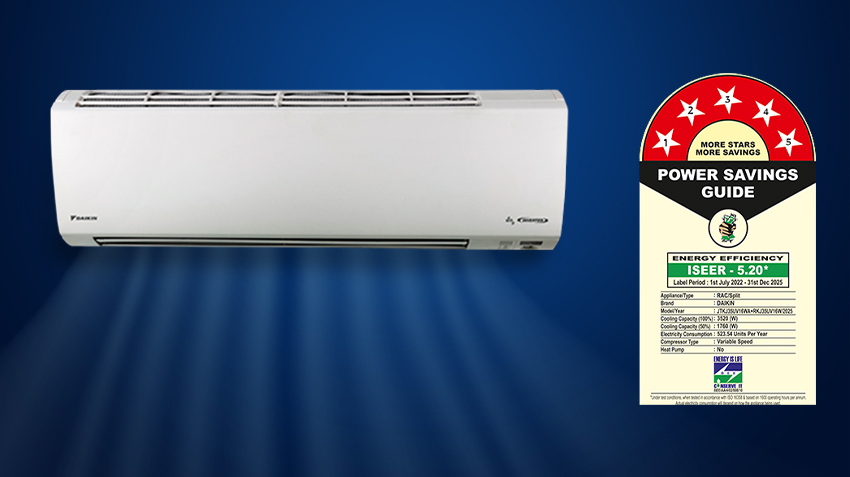Brand Overview
Brand:
Daikin
Parent Company:
Daikin Industries Ltd
Core Categories:
Consumer Durables
Market Context at Entry (2000-2004)
- AC penetration in India was extremely low (~1–2% of households).
- The segment was fragmented, with brands like Voltas, Blue Star, Hitachi, and Carrier holding leadership.
- Consumer preference largely for window ACs; inverter split AC technology almost non-existent.
- Commercial/industrial segment more mature than residential.
Marketing Mix (4Ps)
Product Strategy
Pricing Strategy
- Premium pricing initially: Positioned above Voltas, Whirlpool, Godrej, etc.
- As scale built, introduced mass-market models for volumes.
- Good-better-best portfolio:
- Kinouchi: mass premium
- FTKM: premium flagship
- VRV: institutional luxury
- Heavily leverages seasonal discounts, EMI offers, exchange schemes.
- Maintains premium image without being luxury-priced like niche imports.
Promotion Strategy
Brand Values Communicated:
- “Japanese technology, Indian conditions.”
- Superior cooling even in 50°C summers.
- Long-term energy savings via inverter technology.
- Healthier air with better filtration.
- TV, digital, outdoor media during peak seasons.
- Cricket sponsorships, IPL association in recent years.
- Dealer-driven promotions and strong retailer tie-ups.
- No heavy celebrity endorsements; relies on technical trust, reviews, and word of mouth.
- Heavy focus on “whisper-quiet cooling” and high ambient cooling performance.
Distribution Strategy
- Wide multi-brand retail presence: Croma, Reliance Digital, Vijay Sales, local white goods retailers.
- Exclusive Daikin showrooms in metros and Tier 1 towns.
- Strong dealer network in smaller towns — built rapidly after 2015.
- Direct B2B channel for commercial projects (VRV, VRF, chillers).
- After-sales service handled via authorized Daikin service centers — critical to building trust.
Consumer Perception & Emotional Connect
- Seen as a technologically advanced but trustworthy specialist.
- High satisfaction for:
- Quietness
- Faster cooling
- Energy savings
- Longevity (very low maintenance)
- Limited emotional advertising — focus remains on functional superiority.
Key Phases of Growth
Phase 1 (2000-2009): Commercial & Institutional Focus
- Initial focus on:
- Large projects (hospitals, airports, hotels, IT parks, office buildings)
- Central air-conditioning systems (VRV/VRF technology)
- Partnered with Indian real estate boom.
- Slowly built brand reputation for energy efficiency, silent cooling, advanced technology.
- Aggressive foray into home segment — Split ACs became focus.
- Daikin Inverter Split ACs launched widely (2011) — first serious push for inverter technology in India.
- Brand built equity around:
- Japanese reliability
- Quiet cooling
- Energy efficiency (higher star ratings)
- Long product life
- Opened large manufacturing facility in Neemrana, Rajasthan (2012; expanded further).
- Expanded presence into Tier 2, Tier 3 cities.
- Introduced mid-range inverter models to compete with Voltas, LG, and newer entrants.
- Developed products with Indian conditions in mind: voltage fluctuation protection, high ambient cooling.
- Significant growth in residential segment.
- Launched Made for India product range (Kinouchi, FTKM series, etc.).
- Set up India R&D center (Neemrana, 2022) to develop India-specific innovations.
- Entered adjacent categories like air purifiers.
- Large-scale investment to build second manufacturing plant (Neemrana Phase II, 2023–24) — aims to make India a global export hub.
The Most Important Products That Drove Growth
| Product | Launch Period | Impact |
| VRV/VRF Commercial Systems | 2000–2010 | Established credibility in institutional cooling; highly profitable early segment. |
| Inverter Split ACs | 2011 onwards | Pioneered inverter adoption in Indian homes; positioned as energy efficient and premium. |
| FTKF Series Split AC | 2015 | Mass appeal product balancing price, efficiency, and durability. |
| Kinouchi Series | 2021 | Made-for-India product with high ambient cooling, stabilizer-free operation, copper condenser. |
| FTKM Series (High-end Inverter ACs) | 2021+ | For premium customers seeking best energy ratings and air purification. |
| Air Purifiers | 2017 onwards | Leveraged air quality awareness in metro cities. |
Competitive Landscape
| Segment | Key Competitors |
| Residential Split ACs | Voltas, LG, Samsung, Hitachi, Blue Star, Panasonic |
| Commercial (VRV/VRF systems) | Blue Star, Hitachi, Carrier, Mitsubishi Electric |
| Entry-Mid Segment | Lloyd (Havells), Godrej, Whirlpool |
Daikin's Edge:
- VRV leadership.
- Early inverter technology evangelist.
- Superior Japanese R&D + India customization.
- Aggressive manufacturing scale-up in India.
Challenges & Responses
| Challenges | Daikin's Response |
| Perception as expensive | Launched Kinouchi & FTKF for value segment |
| Price war from Indian & Chinese competitors | Localized manufacturing to control costs |
| Peak summer failures in high heat zones | High ambient cooling product development |
| Voltage fluctuation issues in semi-urban markets | Stabilizer-free, wider voltage tolerance ACs |
| Distribution gaps in Tier 3-4 | Rapid dealer expansion after 2016 |
Impact & Market Performance
- Top 3 player in Indian residential AC market (2023–24).
- Leader in VRV/VRF segment for commercial projects.
- Sales revenue estimated at ₹5,000–6,000 crore in India (FY24).
- Over 10,000 employees directly and indirectly via manufacturing, dealers, and service.
- Large expansion plans to make India an export hub for Middle East, Africa, Southeast Asia.
Key Learnings from Daikin India
- Start as a specialist, expand cautiously into mass segments.
- India-specific product adaptation is critical (voltage, high temperatures, affordability).
- Build early scale through commercial and institutional business.
- Consistent focus on superior technology and after-sales service pays long-term dividends.
- Investing in local manufacturing and R&D is critical for pricing power.
Summary
Daikin's India story is one of technical mastery adapted for Indian reality. By building trust first in institutional cooling and then slowly winning over home buyers with energy-efficient, silent, and long-life ACs, Daikin has built a premium-but-affordable brand positioning. Today, it's not only a top residential AC player but also a critical player in India's evolving infrastructure and commercial sectors — with a growing India-for-global role as well.











